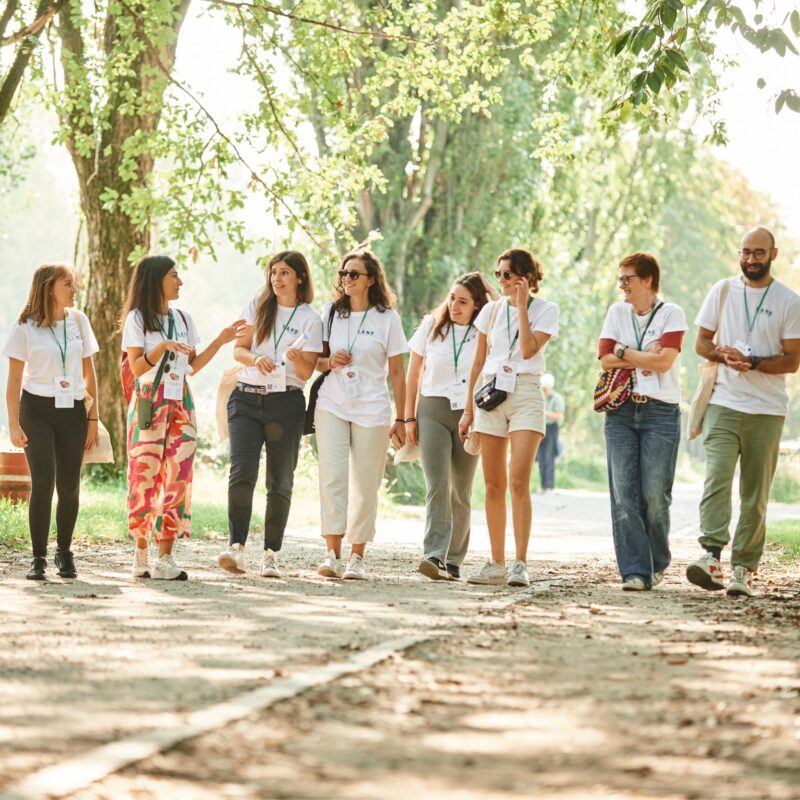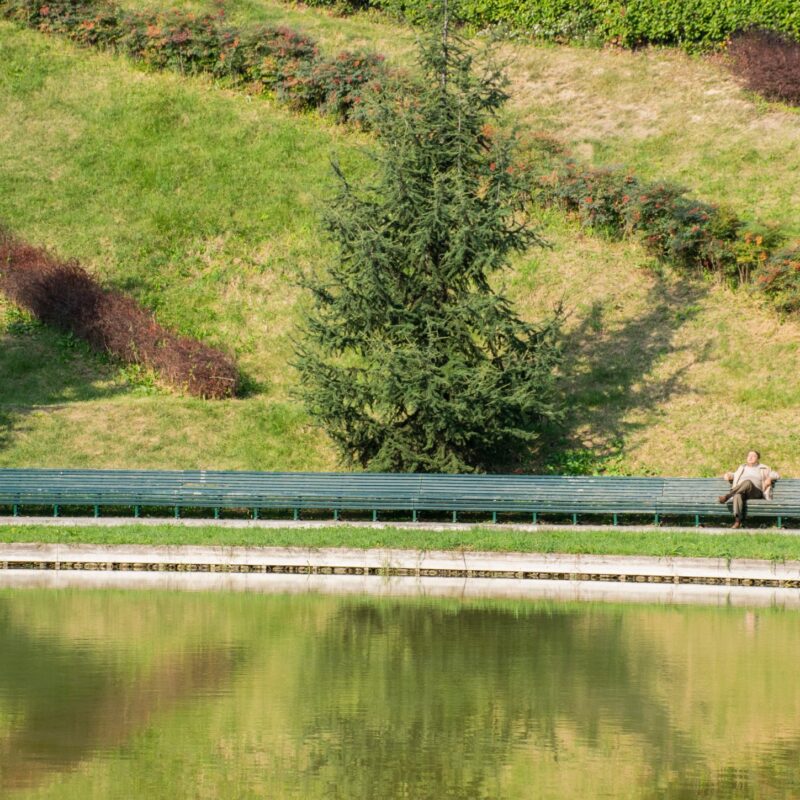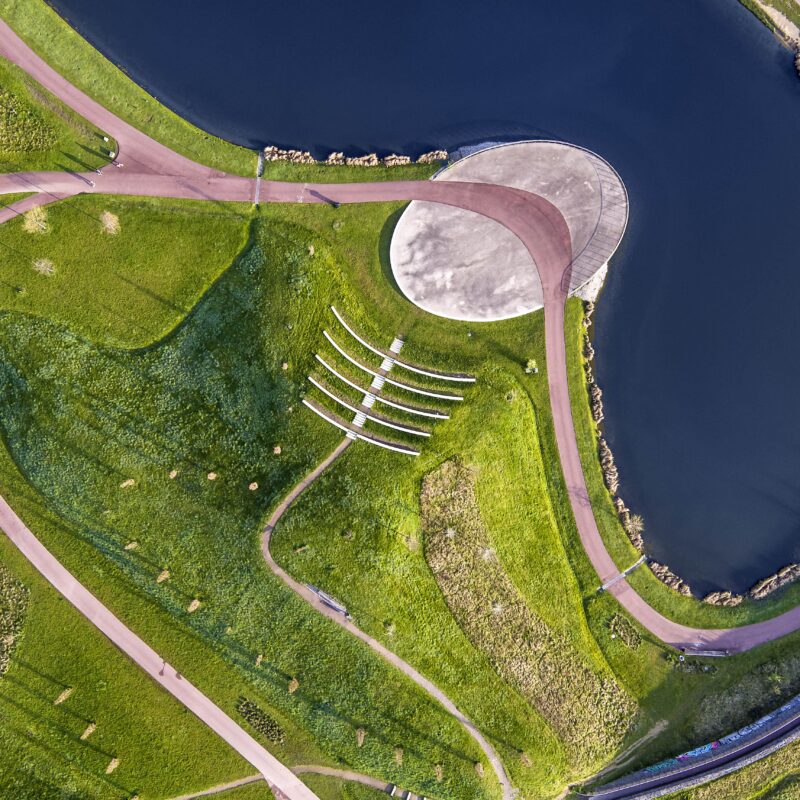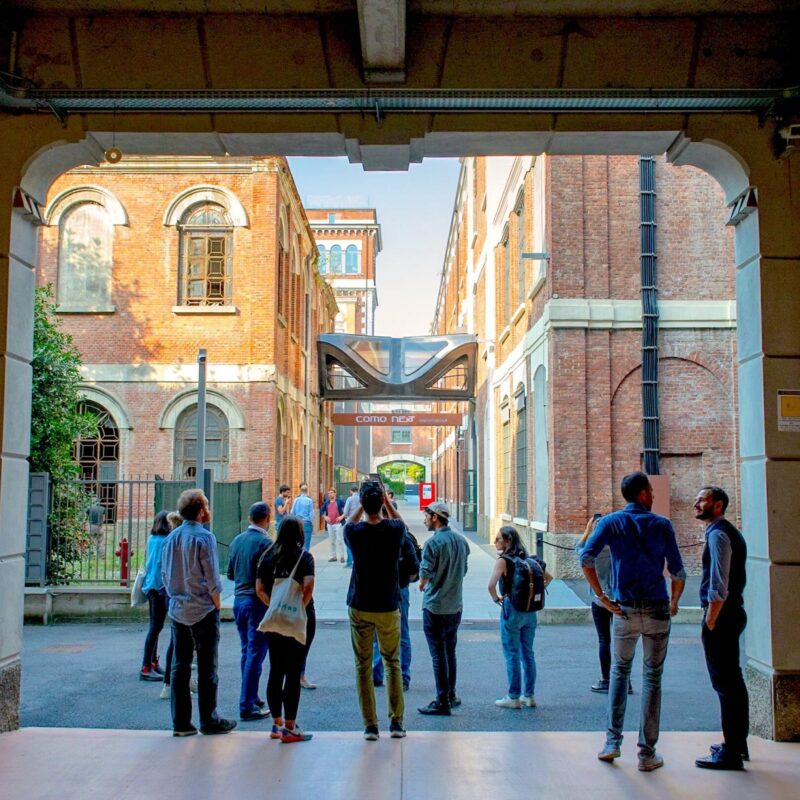
The Dawn of a New Era
Landscape Architecture in a Changing Late-Modern Age
By Andreas Kipar.

“Come, friend, out into the open!” Thus begins “The Walk to the Country,” Hölderlin‘s famous early nineteenth-century elegy. But today it’s hard to find this direct access to nature, in large part because industrialization has created a rift, has caused us to trample it underfoot. We can’t just snap our fingers and expect to be welcomed back. Nature needs time. And we need time to care for it and shape it.
Landscape architecture long ago transcended the garden fences of the past. Open space has become pivotal to a new understanding of landscape. The Council of Europe’s “European Landscape Convention” (signed in Florence on Oct. 20, 2000) emphasizes that landscape is an important part of the quality of life for people everywhere: “in urban areas and in the countryside, in degraded areas as well as in areas of high quality, in areas recognised as being of outstanding beauty as well as everyday areas.” Here, landscape is no longer seen as a passive object of social action, but as a basic component of Europe’s natural and cultural heritage, making a significant contribution to the formation of local cultures.
Good landscape architects, wrote Kristin Feireiss for the Berlin exhibition on LAND and Milan’s “Green Rays” (2009), have two extraordinary qualities: “a far-sighted perception of time, and patience.” At that time we’d gone a long way in putting the cultivation of nature and the landscape at the forefront of city and regional planning processes. “Land in Sight” was the motto of the Berlin exhibition. More than a decade later, under the increasingly urgent challenges of climate change, the digital revolution, new mobility concepts and social isolation, the benchmarks have changed: Instead of “Land in Sight,” it’s now “Land in Transition, Land in Transformation.”
A new age is dawning. Landscape architecture has consciously stepped into the late-modern age’s processes of social change, tackling vital issues that revolve around soil, water and air, but also empathy, social identity and community. In the digital age, digital networking is just something we do, not an end in itself. Networking
is now what enables communication between people and places, rather than the linear, programmatic way of thinking, now finally abandoned, that characterized the 1990s. Non-linear, systems-oriented thinking and circular management and planning will be part of what we do. It won’t allow us to manifest our vision immediately, but only to work our way toward it, step by step.
A unique opportunity to reorient ourselves in this time of transition, to take responsibility and finally to take our place.
We‘ll face challenges, find solutions, and further develop them using nature-based solutions. It’s about new forms of coexistence, and ultimately about increasing the resilience and quality of life in our urban and rural systems. We must never lose sight of the fact that our projects also outgrow us. Because landscape was there before us and will be there after we’re gone. But it only continues to live if it changes, renews itself over time. Just as nature does through its cycles of growth.
We offer landscape consulting with the goal of approaching it in terms of sustainability, which we want to make both visible and measurable. As human beings, we depend on nature. It is unique and essential. Caring for nature means caring for ourselves. This becomes a moral duty in the Anthropocene. Yet nature alone does not necessarily create humane, livable conditions; the biotope is asocial. This duty also makes us aware that designed nature is nature shaped by human hands. We once again become a part of nature, which for too long we disdained as something alien – an epochal change!
“Reconnecting people with nature!” The opportunities of this shift must not be squandered. Every landscape “has its own particular soul, like the person who lives across the way,” said author and poet Christian Morgenstern. This is a unique opportunity to reorient ourselves in this time of transition, to take responsibility and finally to take our place. On this journey, traveling with our sustainability compass, we won’t be alone. We‘ll open up. We‘ll learn to listen to young people. We‘ll share experiences, expectations, hopes. And we‘ll need a good tailwind along this path that weaves together so many fields. So many fields – what we call landscape.
Friends: come out into the open!
Read other Articles from this Edition







